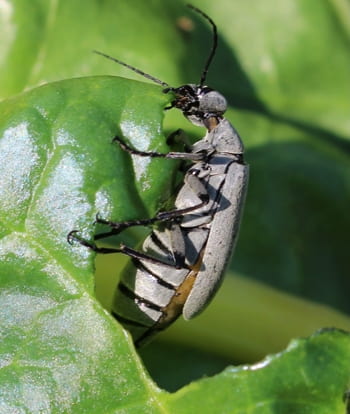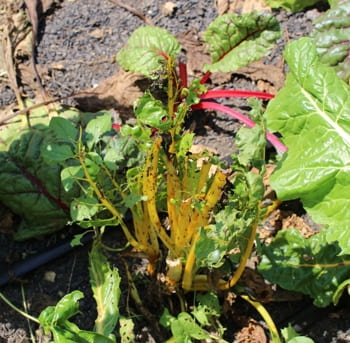— by Raymond Cloyd — Horticultural Entomologist
If you are growing Swiss chard, Beta vulgaris subsp. vulgaris, in your vegetable garden, you may be encountering leaf feeding damage caused by the adult stage of two blister beetle species: the ashgray blister beetle, Epicauta fabricii (Figure 1),

Figure 1. Ashgray blister beetle adult (Raymond Cloyd, KSU)
and the threestriped blister beetle, Epicauta lemniscata (Figure 2).

Figure 2. Threestriped blister beetle adult (Raymond Cloyd, KSU)
Both can cause extensive plant damage (Figure 3) and leave black fecal deposits (“poop”) on plant leaves (Figure 4).

Figure 3. Extensive plant damage to Swiss chard caused by adult blister beetle feeding (Raymond Cloyd, KSU

Figure 4. Fecal deposits (poop) associated with blister beetle adult feeding (Raymond Cloyd, KSU)
The best way to deal with these insect pests is to remove the adults by hand and place into a container of soapy water. Be sure to wear gloves when handling blister beetle adults because they can emit a substance called cantharadin that may cause blisters when in contact with the skin.